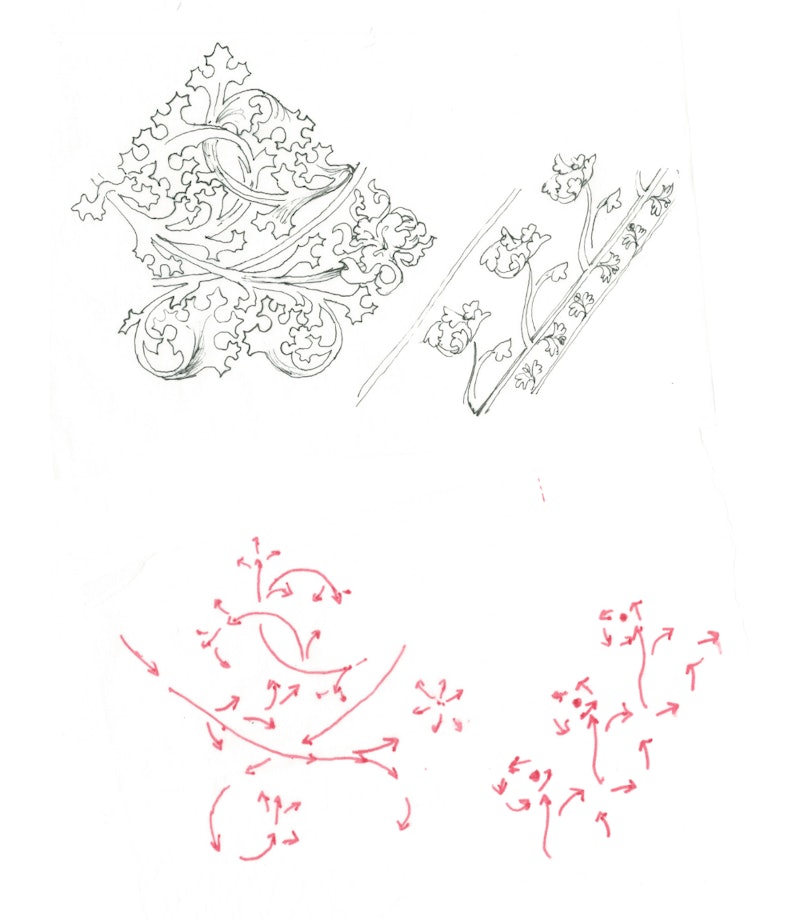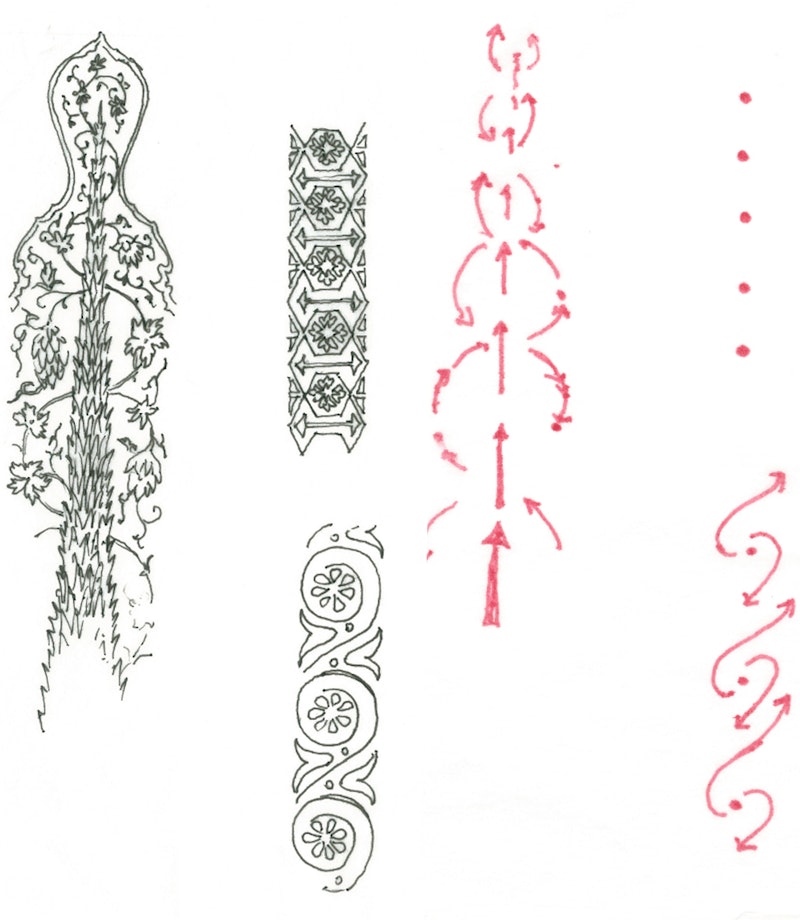Notes from the Cube: Ornament Origins
In a recent Friday Dessert presentation here in The Cube, Kas Leiva put forth her research in a session titled, “Deciphering the Language of Ornament.”
While in grad school at Yale University, Kas was captivated by a Kent Bloomer course on architectural ornament. She later interned with Bloomer – a leading expert, proponent and designer of architectural ornament – and the two have since collaborated on a research project to define what constitutes the language of ornament.

non-bio (geometric)

bio (plants and animals)
Tracing back to the origin of acknowledging ornament as an architectural element by Saint Isidore of Seville in the mid-seventh century, Kas and Kent started to construct the framework for what ornament is. The research began using three ornament encyclopedias from the late 19th century that cataloged the world of ornament. Kent’s goal is to itemize the instances of ornament for each of the categories enumerated, and further analyze them. The main four categories are non-bio (geometric), bio (plants and animals), foliation, and rhythm.

foliation

rhythm
Kas offered further insights into the project, and the enduring symbolism of ornament.
"Through the statistics gleamed from the encyclopedias, the bio category - with references to nature - has been the most common, accounting for approximately 80-percent of total samples taken. This statistic should come as no surprise, yet it is incredibly significant. From the beginning, ornament served as a way to create meaning and connection between the human individual and the cosmos. As history progressed, ornament continued to serve this purpose through abstracted pictorial narratives that aggrandized whatever building or object it ornamented. In today’s world, the importance to meaning and connection to nature cannot be trivialized. We are in the age of biophilia, Living Building Challenge, biomimicry, and environmental stewardship, and symbiosis between building and the natural world is as important as ever. Ornament could be one method of bridging the divide, and our findings hope to further support how and why."
This research has been led by Professor Kent Bloomer with the assistance of Kas. Research is still ongoing, and will be published.
We're using cookies to deliver you the best user experience. Learn More